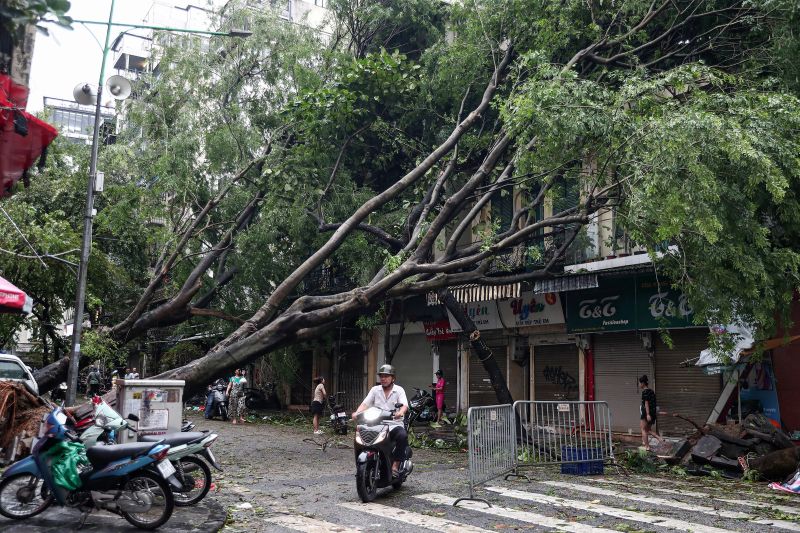Typhoon Yagi, a particularly destructive storm, has wreaked havoc across the regions of Vietnam, China, and the Philippines, resulting in a regrettable loss of several dozen lives. Named after the Japanese word for goat, the storm lived up to its moniker, charging through the vulnerable regions with unforgiving force and brutality.
This deadly tropical cyclone triggered extreme weather conditions across these countries, causing extensive destruction, particularly in the coastal areas. Originating over the Western Pacific Ocean, Yagi stormed across the sea, eventually making landfall and leaving a sprawling trail of destruction, leaving these nations grappling with the aftermath.
In Vietnam, the heavy rainfall and gusty winds provoked by the typhoon led to catastrophic flooding and landslides. As rivers swelled and broke their banks, numerous communities were submerged underwater, leading to a tragic loss of life and property. The storm also triggered widespread power outages, adding to the challenges faced by the local population. In many areas, streets turned into rivers, and homes were washed away, forcing residents to abandon their residences and seek shelter in safer locations.
Crossing over into China, Yagi brought calamitous effects. The regions of Fujian and Zhejiang were surrounded by surges of the sea and ominous winds. Floodwaters swept through the cities, inundating roads and displacing hundreds of thousands of residents. The violent winds ripped apart homes, uprooted trees, and toppled power lines, leading to an enormous blackout across several provinces.
Lastly, the Philippines saw the brutal face of Typhoon Yagi with a massive inundation that submerged almost an entire province. The storm surge resulted in coastal regions being severely affected, with residents fleeing to evacuation centers for safety. Yagi also disrupted the transportation system significantly, causing flights and ferry services to be cancelled while leaving motorists stranded in the flooded streets.
The tropical cyclone also severely affected agricultural land, causing extensive damage to the crop field that local farmers rely on for their livelihoods. There were countless reports of rice paddies, maize crops, and fruit orchards being devastated by the torrential rain and wind. This damage to agriculture will undoubtedly have a long-lasting impact on the economy of the regions, affecting local communities’ food security in the process.
However, despite the tragedy and devastation, the strength of community spirit was palpable in the aftermath of Typhoon Yagi. Local government units, along with international humanitarian organizations, have worked in concert to provide emergency relief, including food, shelter, and medical aid to the affected communities. Thousands of volunteers came forward to assist in clean-up operations and in distributing essential supplies, demonstrating the enduring resilience that often emerges amidst such crises.
To mitigate the effects of such destructive weather phenomena in the future, authorities are taking measures to enhance their early warning systems and improve infrastructure resilience. As scientists predict an increase in the frequency of these extreme weather events due to climate change, this ghastly experience underlines the critical need for preparedness, resilience, and swift action on a global scale.




